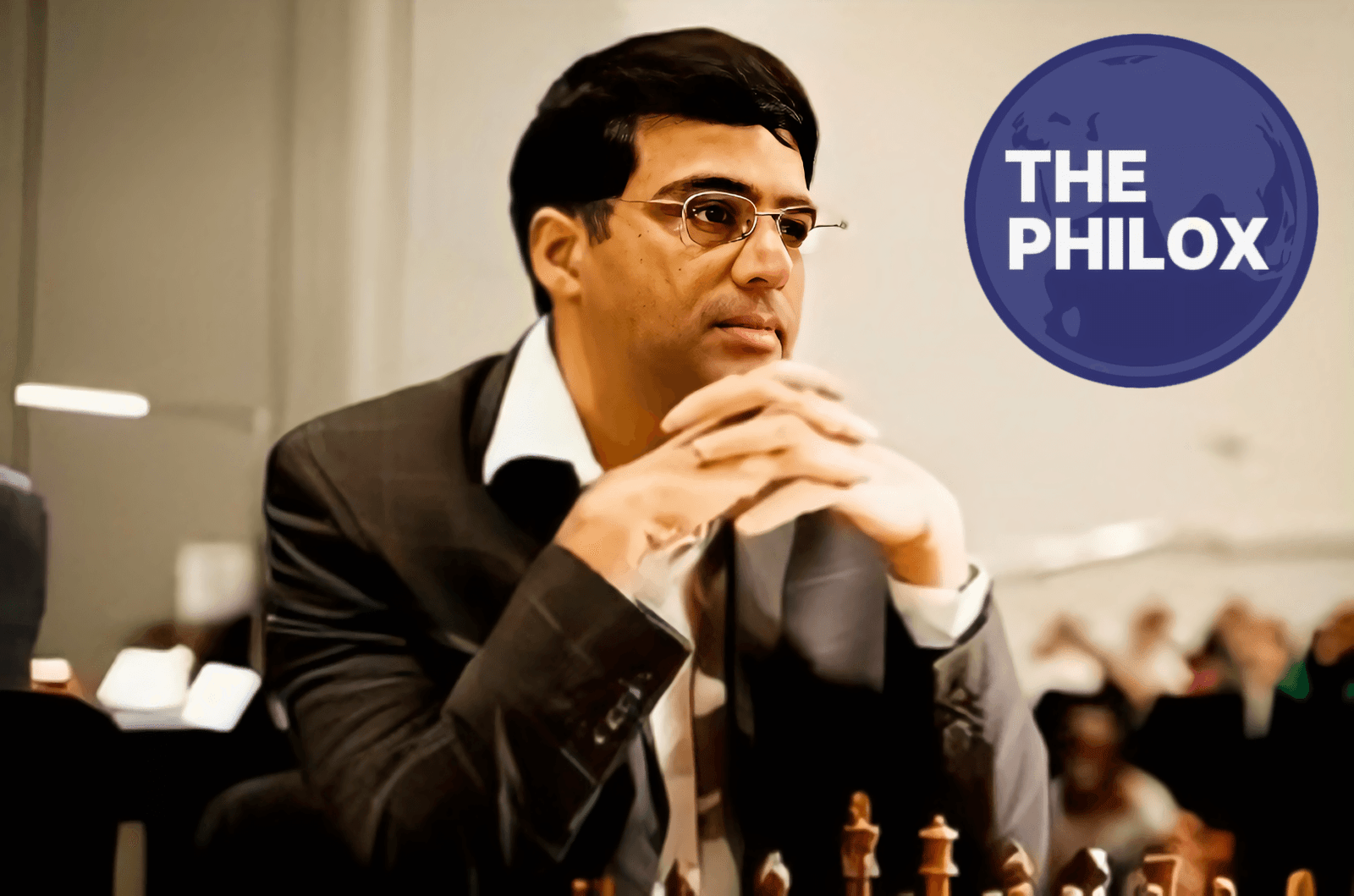Indian chess master Viswanathan Anand made a spectacular comeback into the Indian Express IE 100 list on March 28, 2025, ranking shockingly at No. 36, which rocked the sports world.
In a country where cricket has long ruled supreme, Anand’s climb above stars like Rohit Sharma (No. 48), Virat Kohli (No. 72), and Jasprit Bumrah (No. 83) signaled a dramatic change in India’s sports power hierarchy.
Ahead of even sports officials like Jay Shah (No. 24) and Nita Ambani (No. 26), his position reflects his unmatched impact as a former world champion and worldwide chess ambassador.
Anand’s ascent to this level of prominence honors his transforming influence outside of professional play in addition to celebrating his famous chessboard successes.
Although he became the first Grandmaster of India in 1988, his five world championships—2000, 2007, 2008, 2010, and 2012—solidified his reputation as among the best chess players in history.
Anand’s impact has only been more evident with his mentoring, leadership responsibilities, and lobbying raising India’s chess powerhouse reputation even after he withdrew from top competition.
The Chess Titan’s Continuity Legacy
Anand’s power rating is most amazing in that it goes beyond his own success to include the structural change of Indian chess. Prodigies most notably D. Gukesh, who, at barely 18 years old in 2024 became the youngest world chess champion in history, have found a home at his WestBridge Anand Chess Academy (WACA).
Gukesh’s ascent was not accidental; rather, it came from Anand’s mentoring, strategic sense, and thorough knowledge of contemporary chess.
Anand’s contribution to developing such young athletes marks a change in India’s sports emphasis, where individual excellence is methodically fostered for ongoing world supremacy.
This effect is especially remarkable in contrast to Indian cricket, where generational changes are sometimes erratic and grooming successors is a difficulty.
Even if Rohit Sharma and Virat Kohli are still icons, the very nature of their sport makes it impossible for any one person to have ongoing impact outside their playing years.
Conversely, Anand has effectively shaped the future of Indian chess in a way none of the cricket players could have done, therefore extending his reputation much beyond his prime playing years. <
A global chess governance power player
Anand’s impact goes beyond guiding young players since he helps to shape the chess scene worldwide.
He is among the most influential voices in the management of the game since 2022 as he has been the Deputy President of FIDE, the world chess regulatory body.
In this regard, he has been quite helpful with policy decisions, tournament organization, and chess’s spread into other countries.
One of his most significant accomplishments was India’s successful hosting of the 2022 Chess Olympiad in Chennai, an event attracting a lot of international attention and so supports India’s global chess center development.
India positioned itself under Anand’s direction as a major challenger for administrative influence in world chess, not only a country with gifted players.
His capacity to spearhead such strategic projects sets him in a unique class among sportsmen who move from legendary status to effective leadership.
On the other hand, although Indian cricket officials like Jay Shah (No. 24) have great authority inside the BCCI, their impact is mostly domestic, related to the operation of the Indian cricket ecology.
But Anand has become a global statesman for chess, making sure India makes important decisions rather than merely observes world chess events.
The Digital Revolution by Anand and the Pandemic Chess Boom
An additional important determinant of Anand’s position in the IE 100 rankings is his central contribution to the digital spread of chess.
Thanks mostly to Anand’s aggressive advocacy of online platforms, streaming events, and interactive participation, chess had an explosive 35% increase in player registrations across India during the COVID-19 epidemic.
While other sports were suspended, chess thrived online and Anand emerged as its principal representative.
His efforts not only made chess popular among casual players but also made it available to a fresh generation of Indian talents who might not have otherwise taken up the game seriously.
Anand made sure chess stayed at the top of India’s sporting consciousness even if live events were limited by means of virtual training camps, partnerships with Chess.com and Lichess, and extensive media activities.
By contrast, cricket battled with pandemic interruptions, which resulted in postponed events and schedule anarchy even with its great fan following.
The difference underlined Anand’s foresight in using modern resources to sustain and expand his sport, therefore confirming his impact in a time when flexibility is essential for strength.
surpassing Cricket’s Most Powerful Icons
Given cricket’s predominance in Indian society, Anand’s ranking ahead of cricketing icons like Virat Kohli (No. 72) and Rohit Sharma (No. 48) is just remarkable.
Although Kohli is still an inspirational person, his international career is almost over and Rohit’s leadership, despite its success, is still bound to a format-driven sport lacking long-term administrative impact.
The fact that Jasprit Bumrah ranked lower at No. 83 emphasizes even more the limits of cricket’s individual impact Fast bowlers like Bumrah, unlike Anand, whose legacy spans decades and disciplines, have limited shelf life because of the physical demands of their line of work.
Anand distinguishes himself from previous cricketing stars by his capacity to remain influential in several spheres—athletic, administrative, and developmental—long after his peak performance years. He is present and future architect of India’s sporting development, not only a previous winner.
A cricket nation’s chess superpower
Cricket has traditionally dominated India’s athletic story, but Anand’s place on the IE 100 list of 2025 marks a change in direction.
His supremacy goes beyond personal achievements to include the evolution of chess from a little game into a national force. Thanks to his efforts, chess is now seen as a legitimate, high-stakes competitive sport able to generate world champions rather than an intellectual past time.
Anand’s climb in the power rankings points to a changing sporting identity for a nation that has always elevated cricket on a pedestal.
His success is evidence that influence in Indian sports is now assessed not just in terms of mass appeal but also in terms of real, long-term benefits to the world position of the country.
Anand’s narrative is one of tenacity, vision, and unflinching dedication to excellence as the most potent sportsperson in India in 2025.
His placing above the most well-known personalities in cricket is not only a symbolic triumph for chess but also a turning point for Indian sports overall, demonstrating that real brilliance cuts beyond generations, disciplines, and boundaries.







